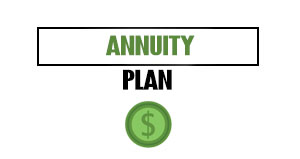The rise of mobile solutions as innovative as Square and NFC-based systems have created new opportunities for businesses. Small merchants can now accept credit card payments instead of cash. But few people tend to walk around with a Square device in their pocket. So, even those solutions still fail to resolve all of the issues surrounding payments. Small debts owed to others like split dinner checks or tickets — still need to be settled by cash. Square might allow a landlord to accept a credit card payment for rent. However, it doesn’t help one renter recoup the share owed to his roommates.
P2P Systems
The need for a system that can handle small transactions led to a new branch of fintech: peer-to-peer payments. Similar to PayPal, a P2P payment system allows users to send each other direct mobile payments using a linked card. The standard example used to illustrate the method is to split the check for a dinner. Before, people would place credit cards on the table and ask the server to split the check. Now, P2P platforms allow people to pay while everyone else pays that person back with their phones. They open the app, enter their friend’s name and the amount they want to pay. The funds are transferred from their digital wallet or their credit card directly to their friend. The recipient can withdraw their funds to their bank account or keep them in their online wallet.

Venmo
The leading service in this space is Venmo. Launched in 2009 by two roommates at the University of Pennsylvania, the inspiration for the service was the difficulty that one of the roommates had to pay back the other after forgetting his wallet. The system was initially built through text messages but soon developed as an app. Three years after its launch, the service was bought by Braintree for $26.2 million. The following year, PayPal paid $800 million for Braintree, gaining possession of an easy way to send funds from one digital wallet to another. In 2015, Venmo processed $7.5 billion in transactions. By the end of the following year was well on its way towards managing $20 billion in annual sales.
Although the app now dominates the large and rapidly growing market for P2P mobile transfers, it’s not alone. In 2013, for example, Square launched its version in the form of Square Cash. This allows users to send each other funds through an app linked to a debit card.
![]()
The P2P system isn’t perfect
The system, though, has flaws. To claim their funds, users need to have downloaded the app, giving the company with the largest user base an incumbent’s advantage. It’s that lead that has made Venmo so hard to move from the top spot, especially among young people for whom “venmoing” is as much a part of student life as copying essay material from Wikipedia. For the companies building the systems, P2P funding also has an income problem. Sending funds from one Venmo account to another using your Venmo balance, debit card or prepaid card is free. There’s only a charge, of 3 percent, if you fund the transaction with a credit card. It’s one of the factors that has kept PayPal’s profitability so low.
But the biggest challenge for P2P transfers is the lack of buyer and seller protection. While PayPal and other eCommerce payment platforms can provide some forms of guarantee to protect transactions, Venmo and other P2P tools provide none.
At the same time, while notification of a successful transaction is received immediately, the processing of the funds can take a few days. That delay has led to reports of buyers using Venmo to pay for goods they found on Craigslist. The seller receives notification and hands over the goods but the buyer later cancels the payment before the transaction is complete. It’s also why P2P payment services stress that their app should not be used for any commerce. The system is intended to be used by people who know and trust each other.

P2P Services Providers
P2P service providers, however, have recognized that one way to earn more revenue from a service that is mostly free is to bring in professional merchants who make frequent transactions and can afford to pay for the service. In 2015 Square extended the functionality of Square Cash to allow any user, including businesses and non-profits, to set up payment pages using a “cashtag” at Cash.me. Instead of sending funds to another user with an app, users could send payments to a payment page. The fee of 1.5 percent is lower than Square’s usual 2.75 percent, but the company says that debit cards transactions are cheaper to process than those of credit cards. Venmo has started allowing some merchants, including food delivery services and ticket sellers to accept payments made through the app.
One of the surprising features available on Venmo is the public nature of the transactions. Payments are published on friends’ news feeds, encouraging users to make their payments but also revealing relationships between friends. Part of Venmo looks like a social media platform.
That hasn’t been lost on the social media platforms themselves. WeChat, China’s version of Facebook, introduced mobile payments in 2013. The service received a huge boost the following year when the company rolled out Red Packets. Based on the red envelopes containing money that people in China hand out at weddings and other events, the feature allows users to send funds to a group of individuals. Members of the group have a day to click the envelope to receive their funds and the share they receive can vary. Each recipient might receive an equal amount, a random share or a share based on the amount of time it took them to tap the envelope.
Part of the aim for senders is to encourage group members to check their messages; businesses have been known to send them to employees to ensure that staff read notices. But once a member of WeChat has a WeChat wallet, the site offers other services, including the ability to buy movie and travel tickets, hail a taxi, and pay bills. Around 300 million of WeChat’s more than 700 million active users have connected their bank accounts to WeChat Pay, which has become the driving force behind the surge in China’s mobile payments. In 2015, the value of mobile transactions in China, a country with a lower usage of credit cards than in the US, passed American usage to reach $235 billion. In 2014, 20 million red envelopes were sent on WeChat over the six-day Chinese New Year. A year later, 3.2 billion envelopes were sent.
Mark Zuckerberg, who has been trying without success to bring Facebook to the Chinese market, has sought to emulate some of WeChat’s payment features. In March 2015, the company integrated a P2P payment process into its Messenger app. Like Venmo, the service was aimed at allowing members to send small amounts of money to friends and family. Users see a dollar sign in the app that allows them to enter their Visa or Mastercard debit card numbers. They’ll then be able to send the funds to someone in their contact list as quickly as they can send them an emoji.
The service is free, and Facebook says that the aim is not to build a payment business. It’s not heavily promoted and so far Facebook isn’t offering the same range of purchase options as WeChat. Initially, at least, it’s more likely to be a way to avoid users leaving Facebook for Venmo.
Snapchat offers a similar service with Snapcash. Promoted through a bizarrely cheesy video, the service allows users to attach a debit card to an account and, by pressing a dollar button, send funds to a contact. Matching the Snapchat style, senders can flick dollars across the screen, and recipients receive a shower of bills.
![]()
As P2P systems spread from dedicated platforms to increasing numbers of social media apps, larger numbers of people will find that they’re able to send and receive money to and from their friends. At the same time that P2P payments are spreading, though, another form of peer-based financing is also developing. With interest rates stuck in the doldrums, investors are looking for other ways of making their assets work. P2P lending isn’t a payment system but like P2P payments, it allows individuals to pass funds from one to the other (and back again) without the intervention of a traditional financial institution.
Lending Club
The largest P2P lending platform is Lending Club. Founded in 2007 and raising nearly a billion dollars in its IPO a year later, the company has over $24 billion in loan issuance and has issued more than $1.5 million. Loan periods are for 36 or 60 months. They range up to $40,000 for individuals and between $5,000 and $300,000 for businesses. Investors purchase notes in $25 increments, allowing them to spread their loans over multiple borrowers. Loans are placed in seven grades according to risk. However, investors can expect to see a median return of between 4.7 and 6 percent. This depends on how long they keep their portfolio. While investors can place as little as $25 they must also pay a service fee of 1 percent of any borrower payment received within fifteen days of the due date.
Lending Club dominates the market, with a 45 percent market share. However, it has suffered after an investigation found “improprieties” affecting millions of dollars’ worth of loans. That’s allowed competitors, notably Prosper, to fill some of the gaps. The company was the first P2P lending platform in the US and also offers loans for 36 or 60 months. The loans, in amounts ranging from $2,000 to $35,000 are only paid to individuals, not businesses. From this, the company has made over $8 billion in funded loans. Lending Club is said to offer high returns on some loans but Prosper boasts lower overall default rates.
Conclusion
There’s clearly a difference between a P2P payment system that allows friends to send each other small amounts of money and a lending marketplace that allows strangers to buy shares of loans made to multiple individuals. Both systems, however, use technology to cut out financial institutions. They also both provide a way for people to transact directly with each other. In the next chapter, we’ll look at what can happen when technology completely replaces the usual governmental regulations that affect the maintenance of currency.



